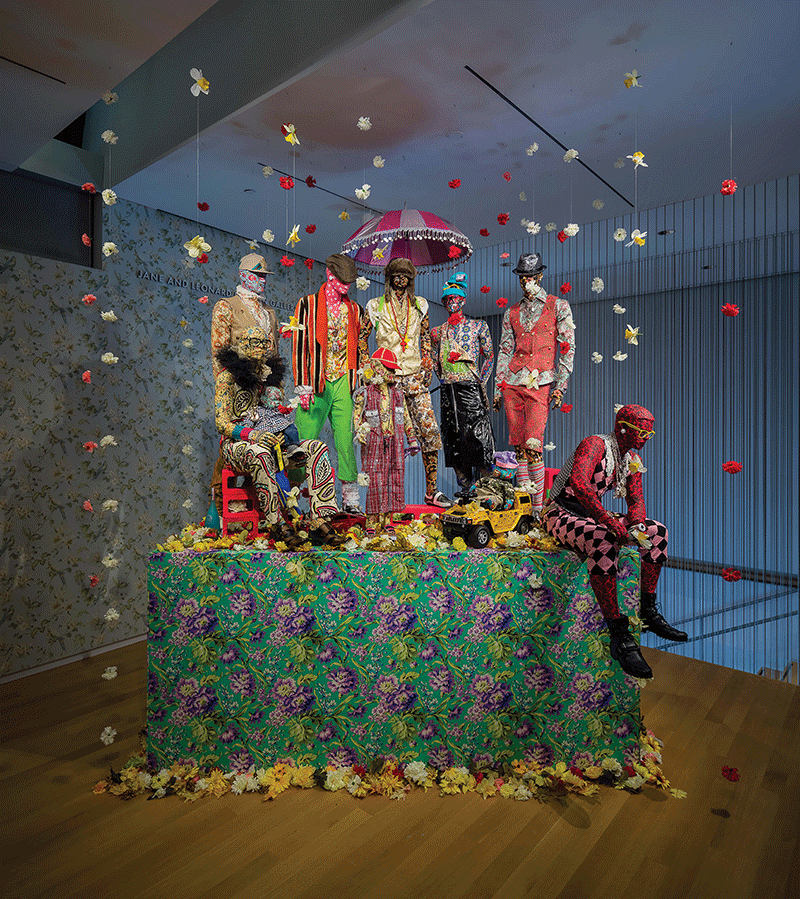Ebony G. Patterson: The Interactivity of Visual Appeal

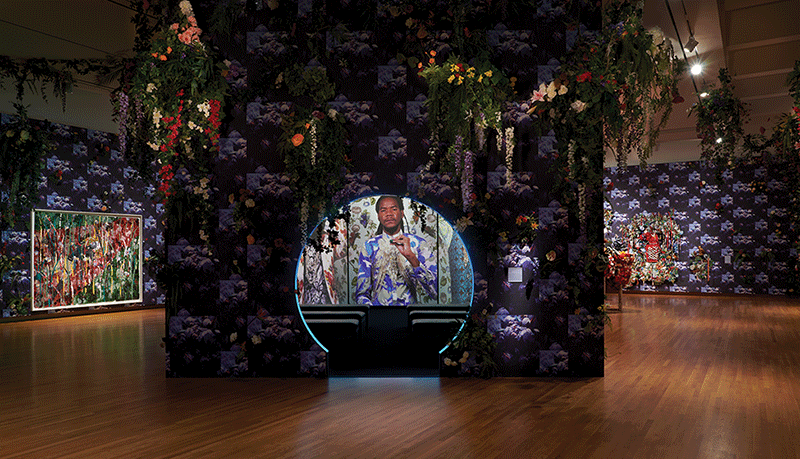
By ALISON REILLY
“Be kind to yourself,” Ebony G. Patterson tells me as we end our conservation, “I have so many friends who are teachers, and when I talk to them, they feel like they’re working more now than they were before the moment of COVID-19. So much more seems to be asked of them. I was saying to a friend of mine yesterday that those days of absolutely nothing are very important. Take them when you feel them. Be kind to yourself.”
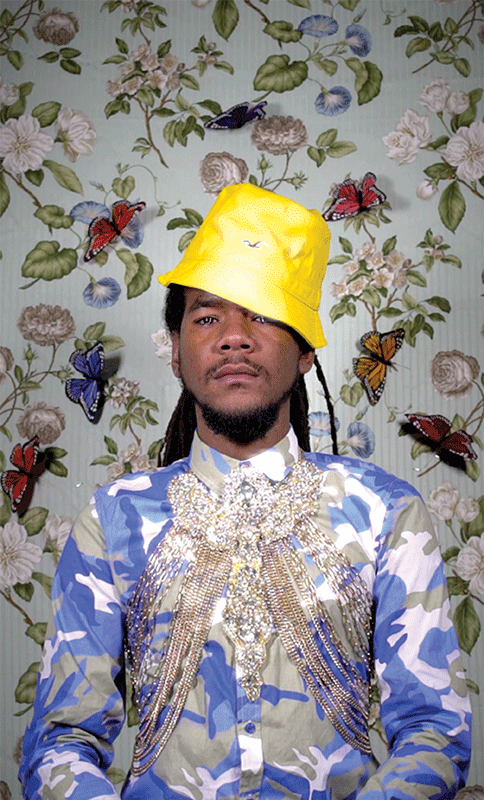
Patterson, an artist who has become known for her large-scale, multi-layered, intricate installations, admits that she also needs to dedicate time to the act of self-care. Before the stay-at-home order was in place in Chicago, she was working towards two upcoming exhibitions, one as part of the 2020 Liverpool Biennial and the other at the Contemporary Art Museum in St. Louis, which was scheduled to open in May.
“I’m somebody who moves a lot,” Patterson says, “and in moving a lot, what happens when you’re asked to remain still? In a capitalistic system, we’re so used to doing that the act of not doing makes us feel guilty. There is value in recognizing that it is okay for you to just be. You don’t have to somehow find some kind of activity. You don’t have to behave as if everything is normal, because it’s not normal. There’s nothing normal about this moment.”
Early in March, as her scheduled exhibitions were postponed, she was still able to work in her studio. “I was going every day. I would get there about 10:30, I’d work all day until about 9:00, 10:00, and then I’d come home. My assistant, who comes a couple days in the week, we’d check in with each other. We both agreed that we were fine and that when the stay-at-home order came down that’s when we would shift gears and start working from home. Up until then, I was in the studio figuring out problems. I would listen to Jamaican radio in the morning, listen to a book, watch some Judge Mathis, and then go home.”
While many artists, galleries, and museums are searching for new ways to stay connected online, for Patterson, it was important to take a break from social media. “I found it to be incredibly triggering,” she admits. In a conversation about the difficulty she was having in shifting from working in the studio to working at home (and staying productive), a friend encouraged her to lean into the way that she felt. “I’ve been trying to listen to myself, my body, my mind, rather than fighting it all. The first thing I did when I decided to lean into it was to just get off social media. I found it a lot easier to cope. But still, there are tough days, and I have to find ways to lean into those moments. That’s the honest-to-God truth.”
Patterson splits her time between Chicago and Jamaica, where she was born and maintains close ties with friends and family. “I live in a dual experience. While I’m watching what’s happening on the ground in the U.S., I’m also watching what’s happening in Jamaica. The differences in terms of the leadership, here nationally versus what was happening in this tiny but mighty country of mine, it was like night and day.” But she has serious fears about the economic fallout of her home country, because of its dependence on outside resources, including the tourist industry, “Watching the shift in terms of borders shut down had me worried, and in many ways, it flashed me back to 2008.”
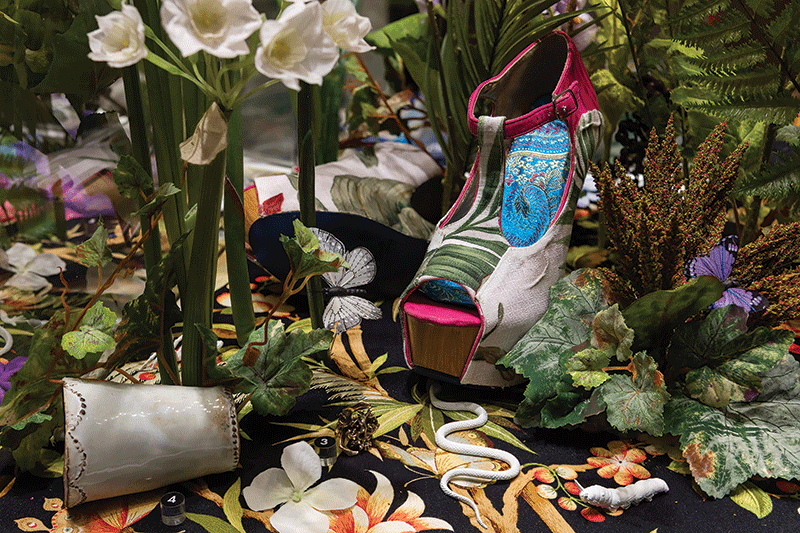
Her recent exhibition, …while the dew is still on the roses… opened in late February at the Nasher Museum of Art at Duke University, and while it is now closed to the public, she was able to attend the opening. In it, Patterson built an immersive environment for viewers by installing fabric wallpaper as a backdrop for her tapestries, sculptures, and portraits. Visitors walk through an enveloping garden-like space with poisonous silk flowers hanging from the walls and ceilings.
Patterson has been exploring the relationship between death and gardens for many years, notably in her 2015 exhibition Dead Treez. At that time, she notes, “I was thinking about bodies that were deceased—that had died violently. I was looking a lot at images that were circulating through social media, images of violence that were shared continuously. And I was thinking about the spaces that these bodies were often dumped, that somehow the land became a way of concealing the secret of some act of violence. Quite often the body was a person of color, a working-class person.”
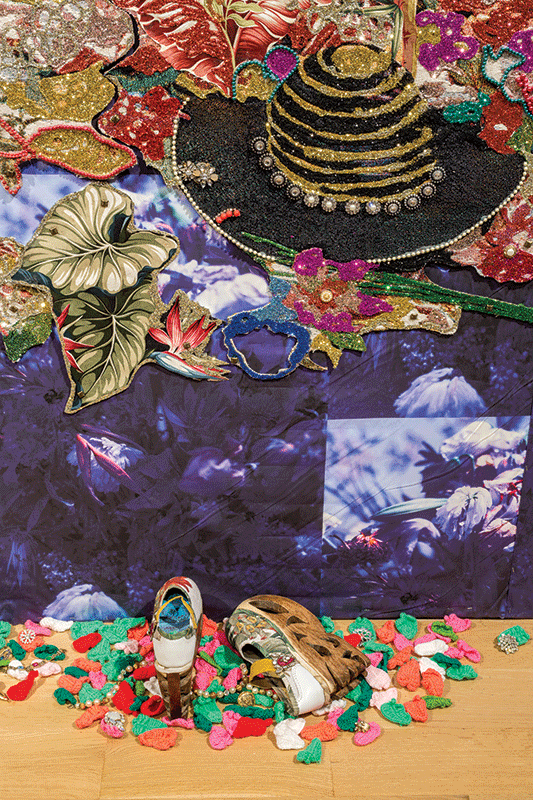
The interaction that Patterson develops with her audience is crucial to her work. For Dead Treez, she exposed viewers to a contained but dangerous landscape by creating poisonous gardens within several large vitrines, but for …while the dew is still on the roses… she wondered, “What if I could get the audience to walk through the grave? The garden as the grave—how could I present that experience within the show but also as a way of anchoring all the works within the exhibition? The larger work is the installation of the garden and then there are 13 individual works that rest within that.”
Visual appeal is key to the success of Patterson’s work. Her shiny, glittery, decorated surfaces attract the attention of the viewer. “I recognize that we’re visual creatures first,” she says. “We like to look at pretty things. The prettier the flower, the more likely it will attract the bee. But what’s inside is what ends up holding the viewer. In many ways, the effectiveness of the surface and its tactility become a ploy to visually trap the viewer.”
Beneath the superficiality of the exterior, Patterson embeds macabre objects, like a dismembered manicured hand or a lone high-heeled shoe. “Is it still beautiful? Is it?” she asks, “I never say it’s so simple. I’m still working on it.”
Recently, given the abrupt change of pace in her schedule, Patterson has been reflecting on her own work habits.
“The last two days, I kept saying to myself, you need to give yourself the same care you give to your work. You must learn to give yourself the same care. At the end of the day, what does it matter if you’re making all this stuff and the thing that makes the work happen is in total disrepair? I’ve been trying to learn that care.”
